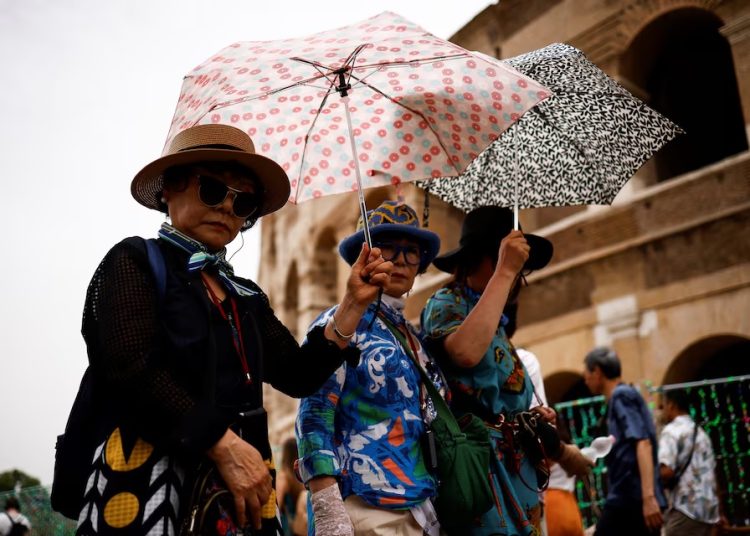LONDON – Deadly heatwaves are scorching cities on four continents as the Northern Hemisphere marks the first day of summer, a sign that climate change may again help to fuel record-breaking heat that could surpass last summer as the warmest in 2,000 years.
Record temperatures in recent days are suspected to have caused hundreds, if not thousands, of deaths across Asia and Europe.
In Saudi Arabia, nearly two million Muslim pilgrims are finishing the haj at the Grand Mosque in Mecca this week. But hundreds have died during the journey amid temperatures above 51 degrees Celsius (124 degrees Fahrenheit), according to reports from foreign authorities.
Countries around the Mediterranean have also endured another week of blistering high temperatures that have contributed to forest fires from Portugal to Greece and along the northern coast of Africa in Algeria, according to the U.S. National Oceanic and Atmospheric Administration’s Earth Observatory.
In Serbia, meteorologists forecast temperatures of around 40 C (104 F) this week as winds from North Africa propelled a hot front across the Balkans. Health authorities declared a red weather alert and advised people not to venture outdoors.
Belgrade’s emergency service said its doctors intervened 109 times overnight to treat people with heart and chronic health conditions.
In neighbouring Montenegro, where health authorities also warned people to stay in the shade until late afternoon, tens of thousands of tourists sought refreshment on the beaches along its Adriatic coast.
Europe this year has been contending with a spate of dead and missing tourists amid dangerous heat. A 55-year-old American was found dead on the Greek island of Mathraki, police said on Monday – the third such tourist death in a week.
A broad swath of the eastern U.S. was also wilting for a fourth consecutive day under a heat dome, a phenomenon that occurs when a strong, high-pressure system traps hot air over a region, preventing cool air from getting in and causing ground temperatures to remain high.
New York City opened emergency cooling centres in libraries, senior centers and other facilities. While the city’s schools were operating normally, a number of districts in the surrounding suburbs sent students home early to avoid the heat.
Meteorological authorities also issued an excessive heat warning for parts of the U.S. state of Arizona, including Phoenix, on Thursday, with temperatures expected to reach 45.5 C (114 F).
In the nearby state of New Mexico, a pair of fast-moving wildfires abetted by the blistering heat have killed two people, burned more than 23,000 acres and destroyed 500 homes, according to authorities. Heavy rains could help temper the blazes, but thunderstorms on Thursday were also causing flash flooding and complicating firefighting efforts.
All told, nearly 100 million Americans were under extreme heat advisories, watches and warnings on Thursday, according to the federal government’s National Integrated Heat Health Information System.
The brutal temperatures should begin easing in New England on Friday, the weather service said, but New York and the mid-Atlantic states will continue to endure near-record heat into the weekend.
India’s summer period lasts from March to May, when monsoons begin slowly sweeping across the country and breaking the heat.
But New Delhi on Wednesday registered its warmest night in at least 55 years, with India’s Safdarjung Observatory reporting a temperature of 35.2 C (95.4 F) at 1 a.m.
Temperatures normally drop at night, but scientists say climate change is causing nighttime temperatures to rise. In many parts of the world, nights are warming faster than days, opens new tab, according to a 2020 study by the University of Exeter.
New Delhi has clocked 38 consecutive days with maximum temperatures at or above 40 C (104 F) since May 14, according to weather department data.
CAP
Tourists holding umbrellas yesterday to shelter themselves from the sun as they walk near the Colosseum amid a heatwave in Rome, Italy.






Discussion about this post